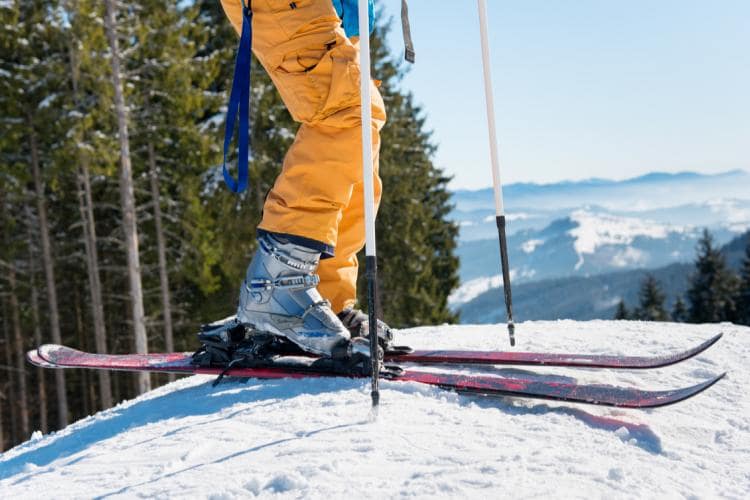Uncommon Tips for Skiing Safety
Surely you have heard the usual advice: Get strong, stay flexible, don’t take the last run, and ski with a helmet. All fine and good—until you notice that the top skiers on ski teams, along with super fit backcountry skiers, all get hurt too. So let’s think about some of the less common ski tips and see if they keep you safe next year.

- Gear matters. Sharp edges and well-tuned skis grab snow snakes less often and get you out of trouble when you really need that edge. Go to the ski shop now and tune your gear.
- Wide skis are fun in powder, but they increase the injury rate on groomed slopes. The wider the ski, the harder it is to lay them over on their edge, which creates more torque on the knee. No one ski is best. Rent or buy skis for the conditions you are in each day.
- Binding design has only marginally improved, and no unbiased data shows that one binding is better than another. Multi-directional heel release (Howell design) should change this. New bindings, however, have less grit, more accurate calibration, and less interface wear. Get them set to the right release setting for the skier you actually are and not the one you imagine yourself to be.
- Helmets have not been shown to reduce neck or significant head injuries, except in some collisions with tree branches or other objects. Clear visibility of your goggles and headgear probably matters more. For racing, there is no doubt: no helmet, no starts.
- Drugs and alcohol are legal in many ski states, but both truly reduce athletic performance. Skiing and boarding half-baked sounds cool to some, but are dangerous to most. Cigarette smoking is just plain idiotic.
- Cold feet, cold muscles, and stiff backs lead to an overall reduction in the ability to respond to sudden changes in position. Start the day in a hot shower or hot tub. Stretch there, rather than on a cold floor. If you have poor blood circulation get boot warmers, or heated socks and gloves. They really work—though they are not durable and don’t survive washing. Upgrade your clothing to the newer materials that are thinner, warmer, and more stretchy. Ride the covered lifts. Drink warm fluids. You will be surprised by how much staying warm decreases minor injuries—which lead to major injuries.
- Look at the grooming map of the mountain. Surprisingly, not many skiers do. There are far fewer injuries on groomed trails than in rough skiing conditions.
- Time your skiing. Ski during the best sun and best snow conditions of the day. Eat lunch when few other people do. The goal is to ski for a long time in life, not a long time in one day.
- Take a guide. Most people do not appreciate how many hidden ski trails there are on every mountain. While skiing is already extraordinarily expensive, local hosts and mountain guides are often relatively cheap compared to ski school instructors. The hidden stashes will put huge grins on everyone’s faces.
- Fix what’s broken. If your back, shoulder, knee or other joints are holding you back, get them repaired. The science of joint repair and rehabilitation has advanced so far that almost all joint injuries and arthritic conditions can be repaired well enough to return you to skiing, sometimes within the season.
Winter brings the opportunity for you to slide down nature’s slopes, often without even walking up. It brings bliss to those of you who plan to enjoy it. The operative word is plan.
